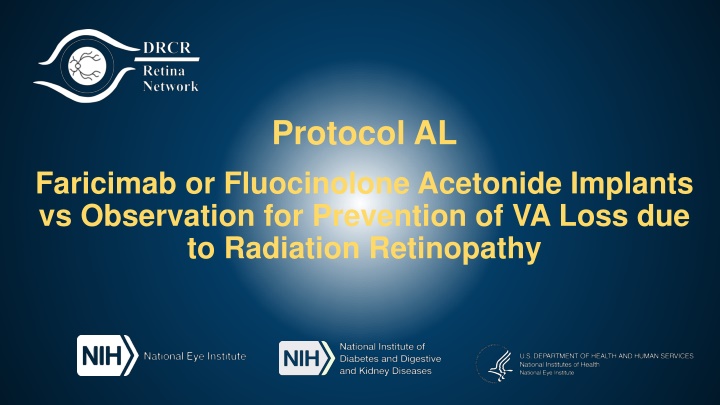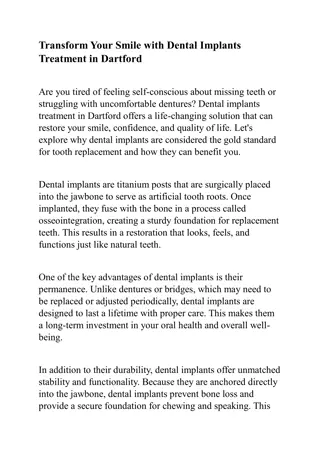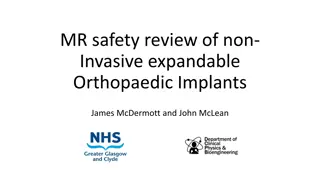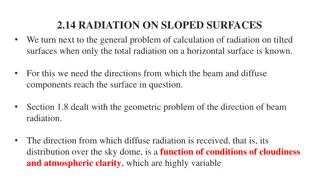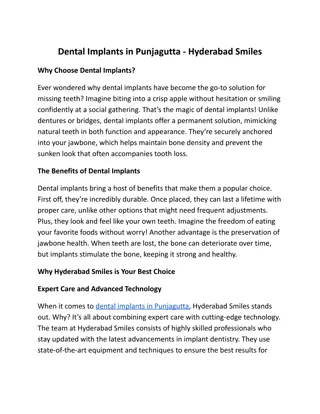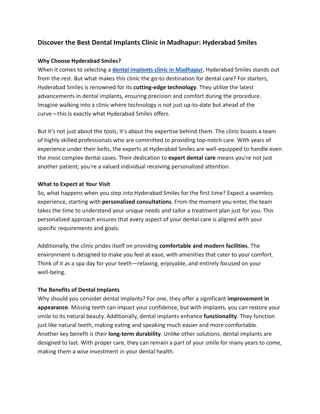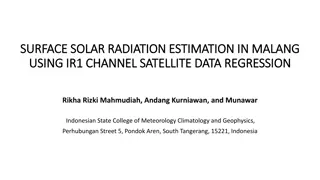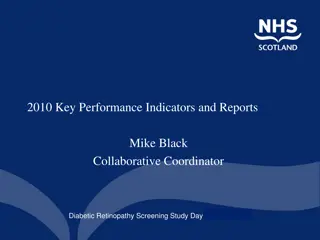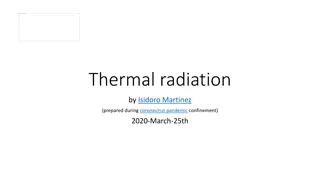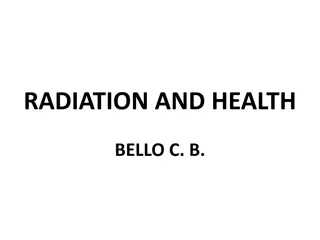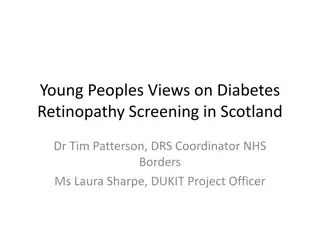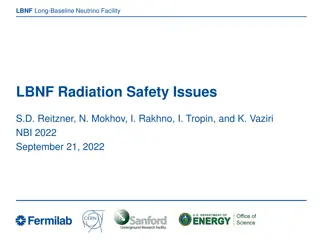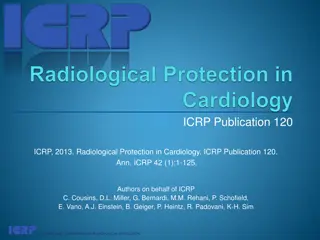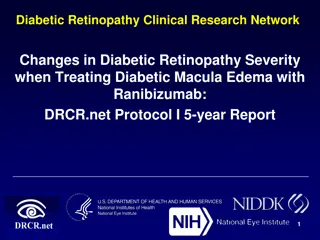Faricimab vs. Fluocinolone Acetonide Implants for Radiation Retinopathy Prevention
Radiation retinopathy is a common complication after brachytherapy for choroidal melanoma, leading to vision loss. Studies suggest potential benefits of anti-VEGF and steroids in preventing macular edema and vision loss associated with radiation retinopathy.
Download Presentation

Please find below an Image/Link to download the presentation.
The content on the website is provided AS IS for your information and personal use only. It may not be sold, licensed, or shared on other websites without obtaining consent from the author.If you encounter any issues during the download, it is possible that the publisher has removed the file from their server.
You are allowed to download the files provided on this website for personal or commercial use, subject to the condition that they are used lawfully. All files are the property of their respective owners.
The content on the website is provided AS IS for your information and personal use only. It may not be sold, licensed, or shared on other websites without obtaining consent from the author.
E N D
Presentation Transcript
Protocol AL Faricimab or Fluocinolone Acetonide Implants vs Observation for Prevention of VA Loss due to Radiation Retinopathy
Radiation Retinopathy (RR) RR is a common complication after I-125 plaque brachytherapy for choroidal melanoma. Development is similar to other retinal vascular diseases and may include: Capillary leakage Macular edema Vision loss secondary to progressive macular and retinal ischemia. RR frequently progresses over time to profound vision loss. The Collaborative Ocular Melanoma Study (COMS) reported that at 3 years, only 43% of patients have VA better than 20/200.
Current RR Treatments Clinical onset is not seen until many months after radiation. Most eyes are observed after radiation and only treated if ME develops Prior studies have shown both corticosteroids and anti- VEGF agents improve ME due to RR. However, VA outcomes are still suboptimal when initiating treatment after development of ME.
RR Prevention with Steroid Horgan et al, Ophthalmology, 2009, randomized trial comparing prophylactic corticosteroid (108 eyes) to control (55 eyes) The corticosteroid group received periocular triamcinolone injections at the time of plaque placement, 4 and 8 months later.
RR Prevention with Steroid At 18 months: CME on OCT occurred significantly less often in the steroid group (hazard estimate, 0.45; 95% CI 0.19-0.70; P=0.001). Moderate vision loss (3 lines or more) occurred significantly less often in the steroid group (31% vs. 48%; P=0.039)
RR Prevention with Anti-VEGF Shields et al, JAMA Ophthalmology, 2019, non-randomized 1131 eyes received bevacizumab at plaque removal and Q4 months for 2 years; eyes were followed for 4 years Eyes receiving bevacizumab had less CME on OCT at 24, 36 and 48 months compared to 117 historical controls. Eyes receiving bevacizumab also had better VA outcomes at each annual timepoint (p<0.05; 48 months was p<0.001)
Rationale These previous studies suggest that anti-VEGF and steroids may each have a role in prevention of macular edema and vision loss associated with radiation retinopathy. A large randomized, controlled trial has not been performed A treatment that prevents the development of RR would have important consequences for many eyes that are successfully treated for choroidal melanoma but are at risk to develop severe RR and vision loss over time.
Objectives Determine if treatment with repeated anti-VEGF or sustained- release steroid versus initial observation can prevent or alter the course of RR and its consequences, such as ME. Compare long- term VA outcomes in eyes treated with repeated anti- VEGF injections or sustained-release steroid with eyes initially observed and treated only if ME develops. Evaluate the natural history of RR with frequent multimodal imaging. 8
Study Design Multi-Center Randomized Clinical Trial (600 Eyes, 600 Participants) Primary Outcomes: Change in VA from baseline to 3 years, Loss of 15 or more letters of VA from baseline to 3 years At least 1 eye that meets all the following criteria: Primary choroidal melanoma receiving treatment with I-125 plaque Baseline VA 20/200 Calculated planned dose to the macula 30 Gy Tumor cannot be directly under the geometric center of the fovea Tumor cannot touch the optic disc Faricimab Iluvien Key Secondary Outcome: Development of ME on OCT Observation 9
Other Key Exclusion Criteria Exam evidence of external ocular infection Moderate NPDR or worse Another ocular condition that in the opinion of the investigator, might affect macular edema or alter visual acuity during the study (e.g., AMD, vein occlusion, uveitis, etc.) History of vitrectomy Note: full vitrectomy or silicone oil at time of plaque is an exclusion. Limited vitrectomy at time of plaque for biopsy purposes is permitted Previous intravitreal or subconjunctival corticosteroids within 90 days of baseline Any prior anti-VEGF injections 10
Other Key Exclusion Criteria At Randomization (i.e., after the steroid challenge): IOP 25 mmHg IOP increased by 8 or more mmHg from the baseline IOP measurement At Baseline: IOP 25 mmHg History or open-angle glaucoma (either primary open-angle or other cause open-angle glaucoma) History of steroid-induced IOP elevation that required IOP- lowering treatment 11
Treatment Groups Injection at randomization & every 3 months Faricimab Implant at randomization and at 24* months Iluvien No treatment unless ME develops Observation * If the 24-month visit is missed, or the implant cannot be given at the 24 month visit for any reason, the second implant may be administered at the next study visit through the 33-month visit. 12
Visit Procedures Every 6 months and Annual Visits Other Study Visits 4-Week Post- Implant IOP Randomization Baseline Up to 36 months VA Eye Exam IOP OCT FP FA OCTA (if available) Study Treatment (per protocol) Iluvien Group only IOP VA Eye Exam IOP OCT FP FA OCTA (if available) Study Treatment IOP OCT VA 3, 9, 15, 21, 27, and 33 Months VA Eye Exam IOP OCT Study Treatment (per protocol) 13
Plaque Placement and Removal Baseline procedures completed 28 days before plaque placement Plaque placement and removal according to standard care Required Steroid Challenge: Sub-tenon s injection of triamcinolone acetonide (40-mg/1 mL) during plaque placement or removal (timing at investigator discretion). Topical steroid or steroid/antibiotic ointment or solution for 2 weeks as prescribed at the physician s standard of care 14
Randomization Randomization must occur within 2-4 weeks after plaque removal IOP will be measured prior to randomization. The eye is NOT eligible for randomization if: IOP 25 mmHG, or IOP increased by 8 mmHG or more from the baseline measurement 15
Follow Up 4-week Visit (Iluvien arm only) Visits q 3 months Visits q 3 months Visits q3 months Imaging Imaging Imaging 2nd Year 3rd Year 1st Year Wide field fundus photographs, wide-field FA, OCT, and OCTA 16
Criteria to Treat Macular Edema (ME) Beginning at the 6 month visit study eyes that develop ME will initiate treatment if: Intraretinal fluid is present on OCT, and CST on OCT machine- and sex-specific thresholds, and a 10% or greater increase in CST from randomization. Or 10% increase in CST compared to the prior visit when CST is below the machine- and sex-specific thresholds and progressive retinal thinning is thought to have occurred secondary to RR. 17
Treatment for ME Continue faricimab PRN If successful Faricimab and Observation Arms 3 monthly injections of faricimab Iluvien will be administered If not successful 18
Treatment for ME If successful, no further treatment ME develops before 2nd Iluvien Administer 2nd Iluvien If not successful, 1 faricimab injection followed by PRN Iluvien Arm 1 faricimab injection, followed by PRN ME develops after 2nd Iluvien 19
Treatment For Other Conditions Sub-retinal fluid: treatment of any sub-retinal fluid requires approval from the protocol chair Radiation papillopathy: may be treated at the discretion of the investigator if any following are seen on clinical exam Disc hyperemic Disc edema Disc hemorrhage 20
Treatment For Other Conditions Other ocular conditions: treatment of other ocular conditions (NVI, NVG, cataract, etc.) is at investigator discretion. Treatment with PRP for any indication is not permitted in the study eye during the study 21
Thank you 22
